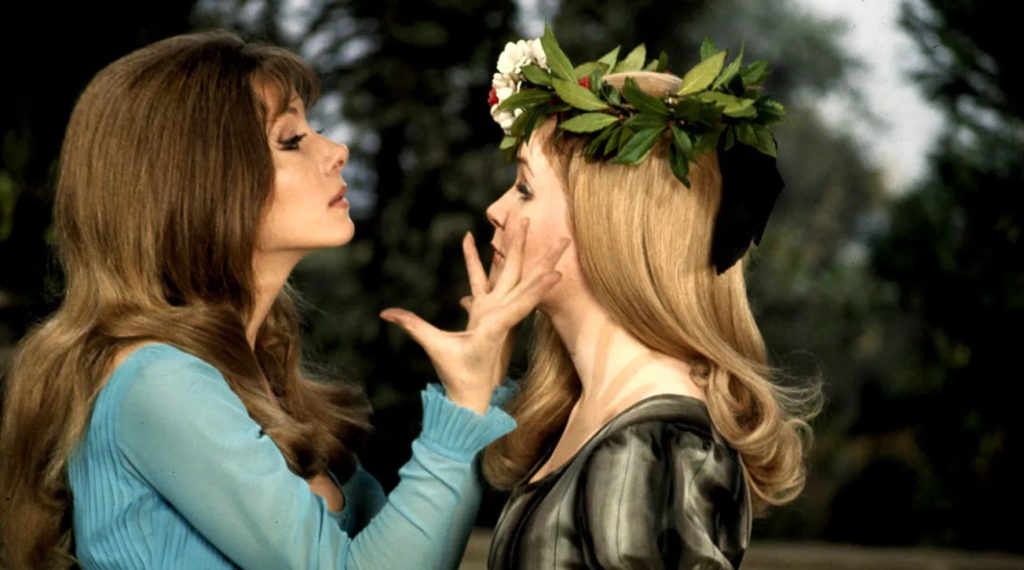‘The Vampire Lovers’ transformed the portrayal of queer themes in film, blending horror with a narrative rich in lesbian subtext and seduction.
A Cinematic Exploration of Queer Themes: 1970’s ‘The Vampire Lovers’ and the Legacy of Lesbian Vampires
The 1970 film “The Vampire Lovers” holds a distinctive place in cinematic history, serving as a hallmark representation of the lesbian vampire archetype. This British-American production, directed by Roy Ward Baker, takes inspiration from the 1872 novella “Carmilla” by Joseph Sheridan Le Fanu, a seminal work that predated Bram Stoker’s “Dracula” by nearly a quarter of a century. “Carmilla” is known for introducing a vampiric figure who embodies themes of seduction and forbidden desires, often seen as analogous to queer inclinations.
Plot and Setting
Set in the late 18th century, “The Vampire Lovers” follows Carmilla, a vampire from a notorious family, who assumes a human guise to infiltrate wealthy households. Her primary targets are the young women of these families, whom she seduces with her charm and allure, ultimately leading to their deaths through vampirism-induced anaemia. The film’s narrative unveils the mystery as two men, each having connections to former victims, pursue Carmilla to stop her deadly spree.
Production and Stylistics
The film starred Ingrid Pitt as the enigmatic and seductive Carmilla, supported by actors George Cole, Kate O’Mara, and Peter Cushing. With the relaxed censorship laws in the UK during the time, the producers leveraged this opportunity to portray the sensuality inherent in Le Fanu’s tale. The film fits into the B-horror and Gothic cinematic trends of the 1960s and 1970s, characterized by opulent settings and an atmosphere of vivid colours and melodrama, reminiscent of the contemporaneous works of Roger Corman and Vincent Price.
Thematic Exploration
“The Vampire Lovers” openly addresses the themes of queer desire, particularly the dynamic of a powerful woman seducing another woman. Carmilla’s interactions with her victims convey both sensuality and control, using her influence as a metaphor for attraction and longing. Her method of luring young women through nightmares and blood-sucking ritualistically from their breasts contrasts with her interactions with male victims, suggesting a nuanced allegory for same-sex relationships amid societal taboos.
Legacy and Impact
“The Vampire Lovers” is celebrated for its unabashed portrayal of lesbian themes through the lens of horror and fantasy, setting the stage for a trilogy labelled the Karnstein Trilogy. This trilogy continued to explore queer themes with films like “Lust for a Vampire” and “Twins of Evil,” each adding layers to the narrative initiated by “Carmilla.”
Despite its contextually dated depiction of lesbian themes, the film is acknowledged for its vibrant representation of issues that were often implied in literature and cinema of earlier decades. It remains a testament to the fluid boundaries of genre cinema and its ability to provide commentary on social issues. “The Vampire Lovers” is currently available for streaming on platforms such as Amazon Prime Video, Freevee, and Tubi.
This seminal work not only carved a niche within the horror genre but also paved the way for broader discussions regarding representation in media, offering a lens through which audiences could explore complex and often censored themes.
Source: Noah Wire Services





